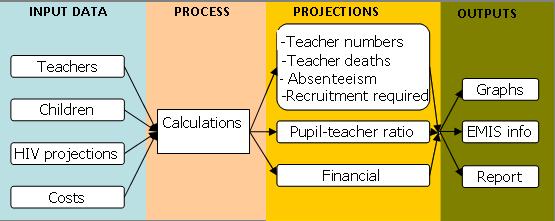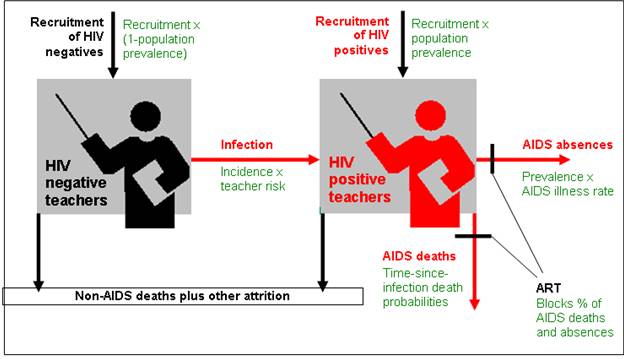The Ed-SIDA models are freely downloadable excel spreadsheet-based models which can used for educational planning in countries with high HIV prevalence.
Ed-SIDA v2.0 (zip file 7MB)
This model can be used to make quick evaluations and projections for the impact of HIV on education supply for
individual countries.
Ed-SIDA v3.0 (zip file 6MB)
This model offers sophisticated and indepth evaluations and projections for the impact of HIV on education supply for
multiple countries or multiple regions within individual countries.
The model is an integral component of the broader remit of demand-led
Partnership for Child Development activities in sub-Saharan Africa. It brings HIV epidemiology, financial analyses and educational planning to a broad audience of stakeholders involved in expanding education systems, planning for Education For All (EFA) achievement and raising awareness of the impact of HIV and AIDS on education systems. The model has manuals available in English and French. It has been developed since early 2001 with support of the
World Bank and
DfID.
Based on data input on teacher numbers, teacher training and recruitment and school-age population projections provided by Ministries of Education, the model provides outputs such as:
- Teacher attrition rates due to AIDS mortality
- Teacher absenteeism due to AIDS illness
- Necessary changes in annual teacher recruitment levels to account for losses arising from AIDS
- Impacts on pupil-teacher ratios
Financial analyses performed with the aid of Ed-SIDA have also allowed the projection of the cost of HIV to education systems as well as required investments to mitigate the impacts: facilitation of teacher access to Voluntary Council and Training (VCT), and first- and second- line therapy.
Stages of an impact projection using Ed-SIDA

The processes of the Ed-SIDA model

Collaborating countries
The model has been applied in Asia, the Caribbean, and a number of sub-Saharan countries including Benin, Burkina-Faso, Ethiopia, Eritrea, Gambia, Ghana, Guinea, Kenya, Mozambique, Niger, Nigeria, Senegal, Togo, Tanzania and Zambia.
Resources

